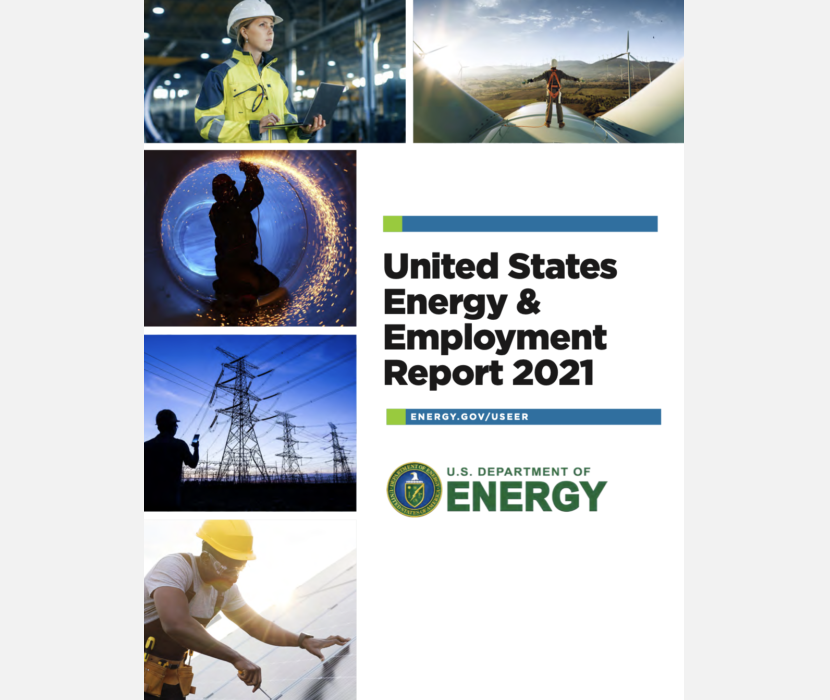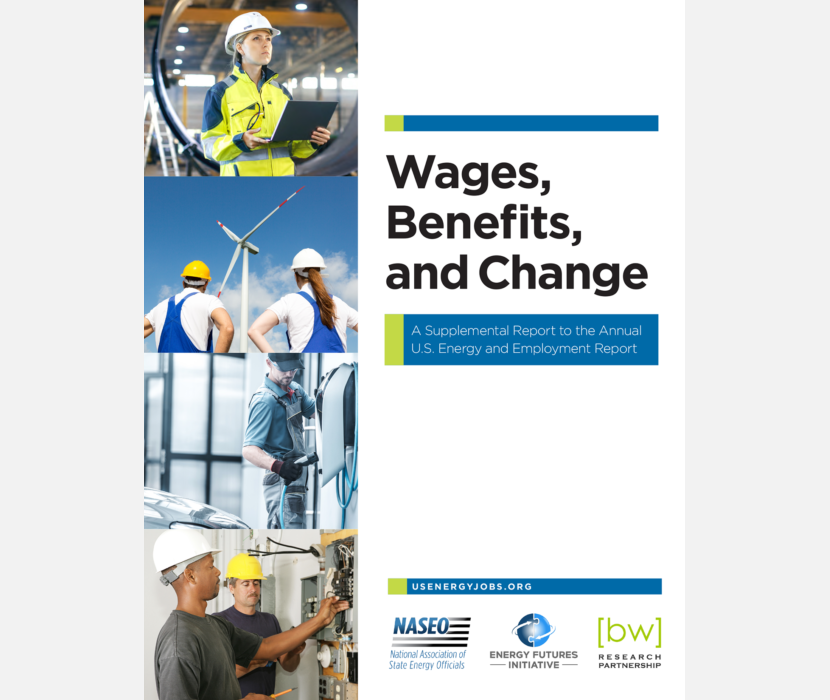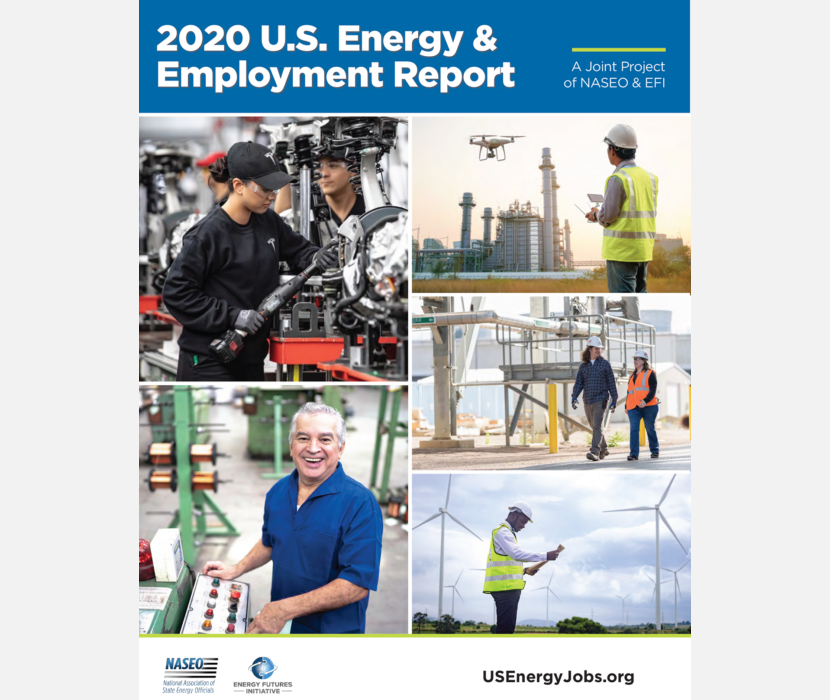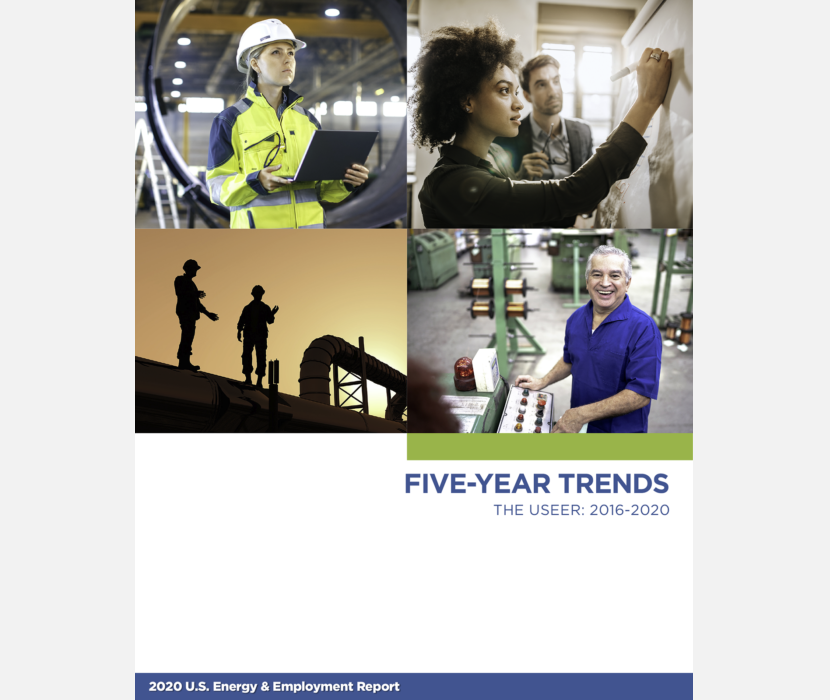U.S. Energy & Employment Report — The annual survey of important trends and skill sets for the 21st Century energy workforce.
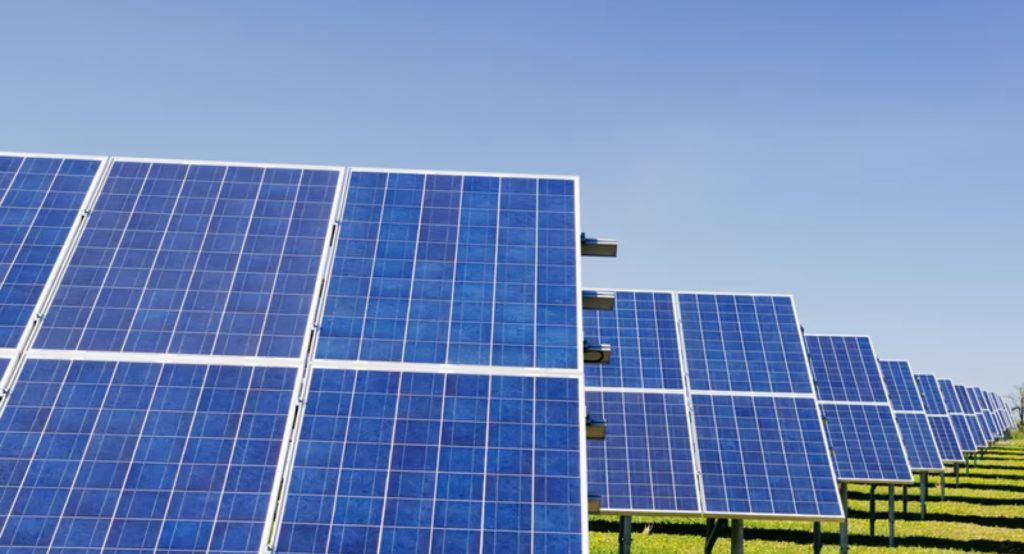
The U.S. Energy and Employment Report (USEER) began in 2016 at the recommendation of the first Department of Energy Quadrennial Energy Review to better track and understand employment within key energy sectors that have been difficult to impossible to follow using other publicly available data sources.
The study combines surveys of businesses with public labor data to produce estimates of employment and workforce characteristics.
The survey, since its inception in 2016, has served as the primary source of data on energy jobs across all 50 states and the District of Columbia. The USEER has tracked the growth of energy jobs, the impact of the COVID-19 health crisis, and the sector’s recovery from 2021.
History
Insight on the people who meet the nation’s energy needs and the trends driving the modern energy workforce
Founded
2016
Organizations
EFI Foundation
National Association of State Energy Officials
BW Research Partnership
Learn More
Under the leadership of then-Energy Secretary Ernest J. Moniz, the U.S. Energy Employment Report (USEER) was first published in 2016 to better track and understand employment trends in key energy sectors that have been difficult to follow through other publicly available data sources: Electric Power Generation, Transmission, Distribution, and Storage, Fuels, Energy Efficiency, and Motor Vehicles.

The analysis found that from 2015 to 2019, the annual growth rate for energy employment in the United States was 3%—double compared to 1.5% in the general economy. The Obama Administration issued the second USEER in 2017. With the publication of the fifth installment of the report, the project team also produced an exclusive five-year summary of U.S. energy jobs trends.
The project was recommended in the first installment of the Quadrennial Energy Review (QER), “to reform existing data collection systems to provide consistent and complete definitions and quantification of energy jobs across all sectors of the economy.” The Obama Administration issued the USEER for two years, drawing upon data collected by BW Research Partnership, a firm that conducts economic and workforce research, customer and consumer analyses, and strategic planning and evaluation services.
When the Trump Administration ignored a Congressional mandate and declined to continue data collection and production of the USEER, the Energy Futures Initiative and the National Association of State Energy Officials, which represents the 56 governor-designated State and Territory energy officials, teamed up to raise funds privately for the 2018 report. This guaranteed that the report would continue to serve as an important and consistent tool for policymakers at the state and federal level, trade associations, labor unions, and other key stakeholders.
The EFI/NASEO team, like the Obama Department of Energy, used the same methodologies with BW Research to provide continuity with the previous editions of the USEER in data collection and accuracy in year-to-year comparisons. The team created a separate website, www.usenergyjobs.org, which includes interactive maps showing energy employment data for each state and the District of Columbia. In 2021, the full set of underlying data from 2016 to 2020 was published on the website. As of 2022, the EFI/NASEO editions of the USEER are also housed on www.energyfuturesinitiative.org.
In addition, each annual USEER was accompanied by a supplemental report covering wage energy job trends in all fifty states and the District of Columbia. The project also included “Wages Benefits, and Change” (April 2021), a deep dive into compensation levels throughout the energy sector, and a report summarizing the first five years of data (published March 2020). In all, the EFI/NASEO team produced a total of ten reports before the Biden Administration resumed the project.
In 2021, the USEER—still produced by EFI, BW Research, and NASEO—moved back to the Department of Energy, which released the sixth edition, the first to cover Covid’s impact on the energy sector. That report found a loss of about 840,000 energy jobs, or about 10 percent of the workforce, over the 12-month period. Despite that decline, there were also positive signs that the sector was on the rebound—at the pandemic’s peak in mid-2020 energy jobs had decreased by 1.4 million. By the end of 2020, 520,000 energy jobs had already returned. Additionally, employers that responded to the survey also signaled confidence in the upward employment trend continuing.
At the launch event, U.S. Secretary of Energy Jennifer Granholm praised the effort to keep the report going. “I want to thank NASEO, the Energy Futures Initiative, and Secretary Moniz, for heroically stepping up when it became clear that the previous administration didn’t plan to meet their obligation,” Granholm said. “It’s because of you that we know just how much the energy sector, especially clean energy, has grown in recent years,” Granholm noted that the Biden Department of Energy was committed to continuing the USEER as a government imperative to track the impact of the historic investments to come in infrastructure and clean energy innovation.
DOE-Issued Reports
See below for additional years of U.S. Energy and Employment full and state-by-state reports. These Department of Energy-issued reports reference data collection for the previous year.
2017 U.S. Energy and Employment Report
2017 Energy Employment by State Report
Download Data
The public release of this data supports the hands-on work of policymakers, academic researchers, and other data practitioners. This is a joint effort of EFI, NASEO, and BW Research Partnership, which owns the data and was responsible for the data collection and formatting.
2016-2019 Energy, Energy Efficiency, and Motor Vehicles Sector and Subsector Employment: Full data set of all sectors and subsectors for the last four years of the report. Download XLS
2016-2019 U.S. Energy Energy Employment Data by the Five Sectors: Data on five sectors: Fuels; Electric Power Generation; Transmission, Distribution & Storage; Energy Efficiency; and Motor Vehicles & Component Parts. Download XLS
2016-2019 U.S. Energy and Employment State Technology and Sub-Technology Employment: Data set by state overview and characteristics of employment for the last four years of the report. Download XLS



